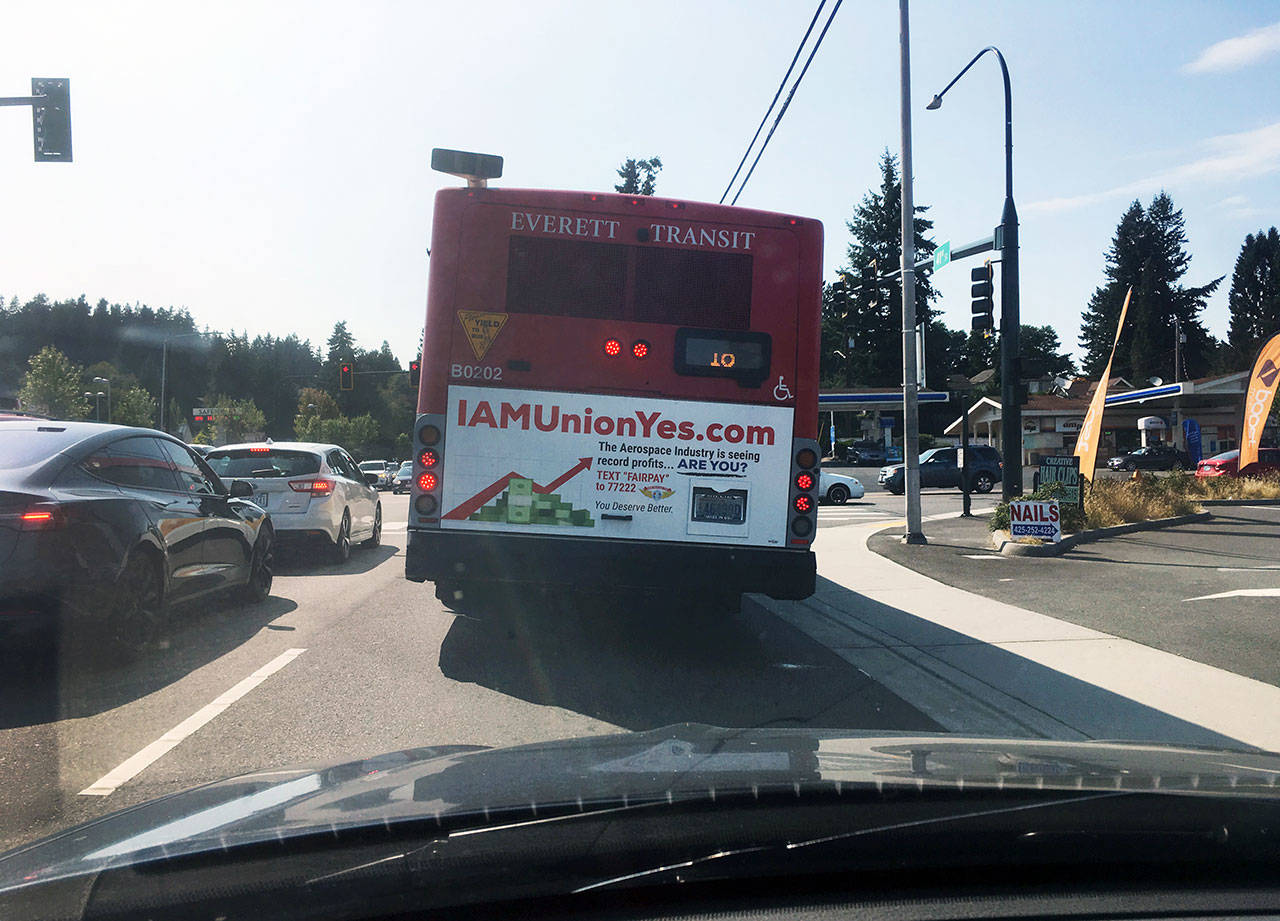You’re late, per usual, and hoping to see a steady stream of green lights and flowing traffic.
Then, as you come to an intersection, there’s a bus at one of its marked stops, loading and unloading passengers. But it’s just on the other side of the intersection, and traffic in the lane over is cruising through. You’re stuck behind the bus and the light.
If only that bus (which relieves congestion by moving people instead of them and their highly engineered carriages) wasn’t blocking the way.
Reader Jim Cleary asked why bus stops often are immediately after an intersection, which can put other overeager drivers behind it in the cross traffic, instead of before a signal.
The short answer: safety.
The longer answer: access, convenience, rider habits, traffic flow … and safety.
“‘Far side’ stops are generally preferred because sometimes impatient motorists will make an unsafe and illegal right turn in front of a stopped bus,” Everett Transit director Tom Hingson said in an email.
Anyone who has had a driver in the adjacent lane suddenly cut them off to turn in front of them should understand that danger and frustration. There’s a reason that, unless otherwise marked, center lanes go straight.
Almost half of Everett Transit’s 645 bus stops are on the far side of an intersection, city spokesman Julio Cortes said.
Community Transit stops generally are “far side” for similar precautionary reasons. Of its 1,463 locations, 983 are on the far side.
“This is specifically done so drivers behind the bus are not tempted to drive around the bus to get through the light, possibly creating an unsafe situation,” Community Transit spokesperson Nashika Stanbro said in an email.
The location encourages riders, of which Community Transit has nearly 40,000 each weekday, to use nearby crosswalks instead of jaywalking. Putting an intersection behind the bus makes pedestrians more visible to trailing traffic.
Not all Swift stops are on the far side, which is preferred by Community Transit. When the agency wants to build a stop, it has to work with the government in which the stop is located. Sometimes a city’s traffic engineer may determine that the near side is the best choice because of accessibility or safety concerns, Stanbro said.
“The actual station location depends on the existing built environment, whether we are making turns, and availability of right-of-way,” she said.
Locations are selected based on rider requests and density of businesses, housing, residents and workers, as well as what already exists, such as crosswalks, curbs, driveways and on-ramps.
A goal of Swift and Everett Transit buses is moving lots of people quickly. One way that’s achieved is transit signal priority, a coordination between Community Transit buses and traffic signals in south Snohomish County. But that priority only works if the bus is on the other side of a light, Stanbro said.
So the next time you’re running late and behind the bus, remember that its riders are saving you some time, even if you’re waiting through a signal.
Have a question? Email streetsmarts@heraldnet.com. Please include your first and last name and city of residence.
Talk to us
> Give us your news tips.
> Send us a letter to the editor.
> More Herald contact information.

























